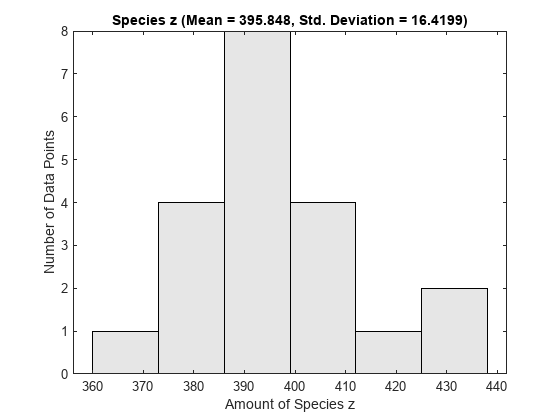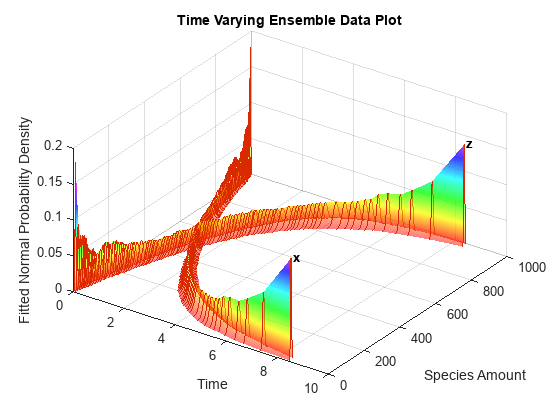sbioensemblestats
Get statistics from ensemble run data
Syntax
[t,m] = sbioensemblestats(simDataObj)
[t,m,v] = sbioensemblestats(simDataObj)
[t,m,v,n] = sbioensemblestats(simDataObj)
[t,m,v,n] = sbioensemblestats(simDataObj,names)
[t,m,v,n] = sbioensemblestats(simDataObj,names,interpolation)
Arguments
| Column vector of time points |
| Matrix of mean values from the ensemble data. The number of
rows in |
| A cell array of SimData objects, where each SimData object
holds data for a separate simulation run. All elements of |
| Matrix of variance obtained from the ensemble data. |
| Cell array of character vectors for the quantity names whose
mean and variance are returned in |
| Character vector, string, string vector, string array, or cell array of character vectors.
'
or
'
to resolve ambiguities. If you specify empty {}
or empty string array (string.empty) for
sbioensemblestats returns statistics on all
time courses contained in
|
| Character vector or string denoting the interpolation method to use for resampling of the
data onto a common time vector with the smallest simulation stop
time. See resample for a list
of interpolation methods. Default is
'linear'. |
Description
[ computes
the time-dependent ensemble mean t,m] = sbioensemblestats(simDataObj)msimDataObj'linear' interpolation method
to resample the data onto the common time vector. See resample for a list of interpolation
methods.
[ also
returns the variance t,m,v] = sbioensemblestats(simDataObj)vsimDataObj
[ also
returns the names of quantities t,m,v,n] = sbioensemblestats(simDataObj)n corresponding
to the mean m and variance v columns.
Each column of m or v describes
the ensemble mean or variance of a quantity (or state) as a function
of time.
[ computes
statistics only for the quantities specified by t,m,v,n] = sbioensemblestats(simDataObj,names)names.
[ uses
the interpolation method t,m,v,n] = sbioensemblestats(simDataObj,names,interpolation)interpolation'linear' interpolation
method by default.
Examples
Version History
Introduced in R2006a


